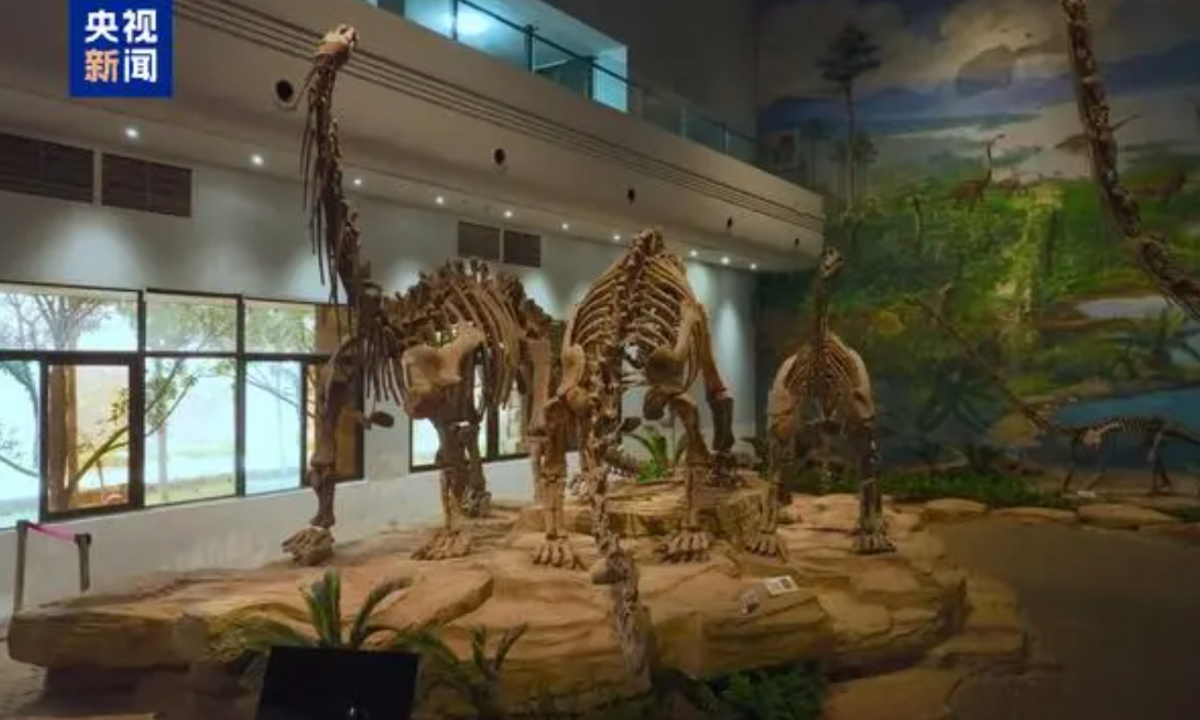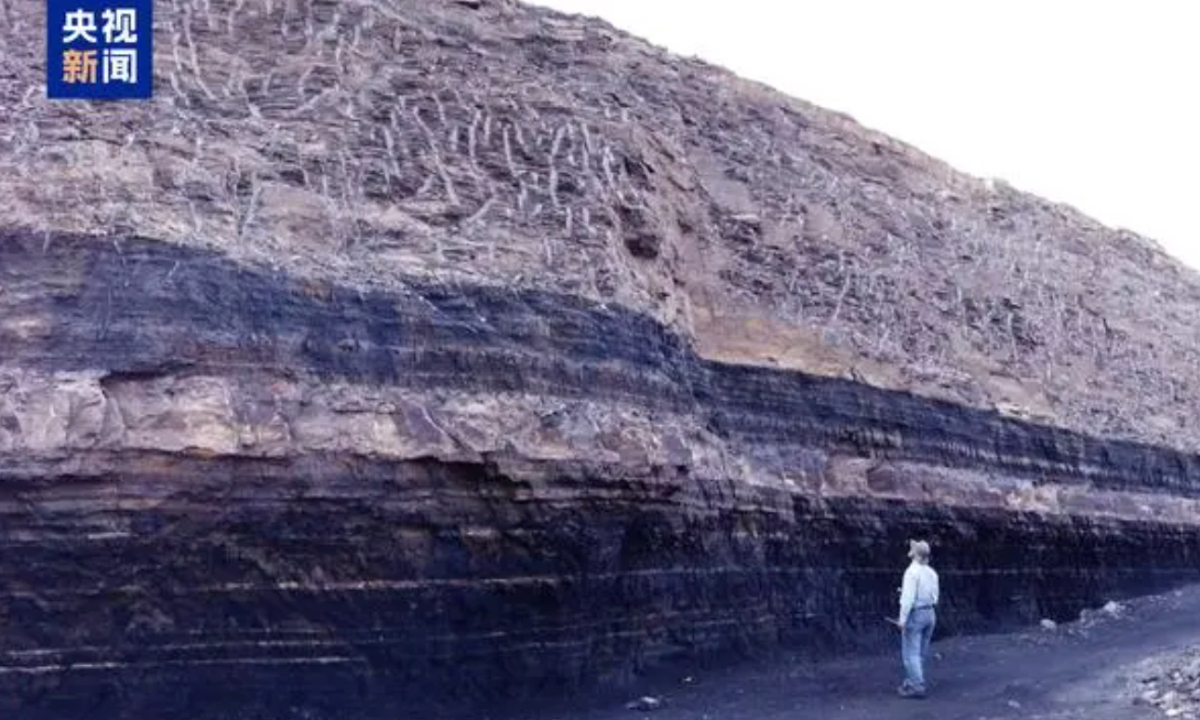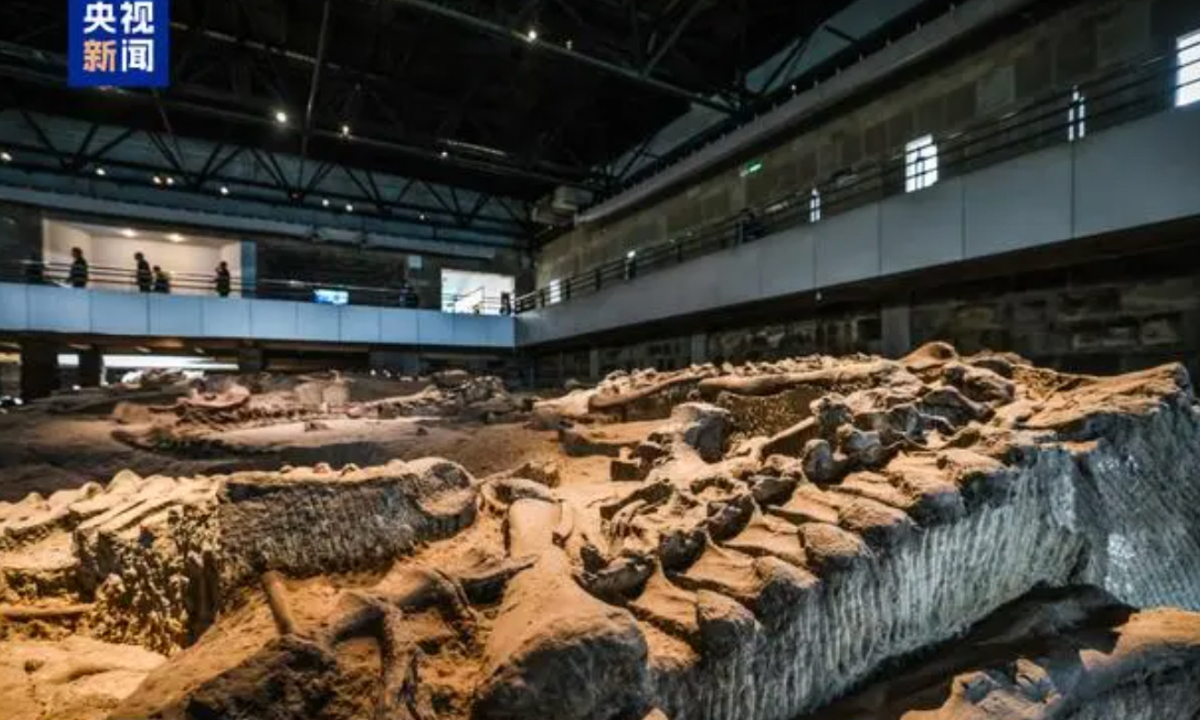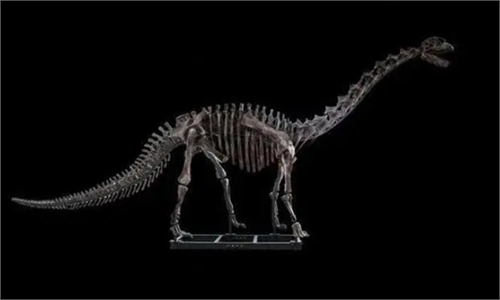ARTS / CULTURE & LEISURE
Jurassic dinosaur fossils site among latest three Chinese sites listed as IUGS geological heritage

Photo: Screenshot from CCTV
The International Union of Geological Sciences (IUGS) has announced the inclusion of three Chinese geological heritage sites in its second batch of sites to be inscribed on the global 100 Geological Heritage Sites list. The recognized sites are the Permian vegetation of the Wuda Fossil Site, the Dashanpu Middle Jurassic Dinosaur Fossils Site, and the Guilin Karst landscape.
The announcement was made during the 37th International Geological Congress in Busan, South Korea. A press conference was held in China on Tuesday to announce the specifics of the inclusion.
"The three geological heritage sites from China that were selected this time are outstanding representatives of the country's geological heritage. Their scientific value and the quality of the research produced on them have been unanimously recognized by the international academic community, and their current conservation status has received high praise from the global community," said Zhang Jianping, vice chair of the IUGS International Commission on Geoheritage and a professor at China University of Geosciences (Beijing), at the press conference.

Photo: Screenshot from CCTV
The Permian vegetation of the Wuda Fossil Site in North China's Inner Mongolia Autonomous Region is often referred to as the "Pompeii of Plants." The coal-forming forest was preserved between two coal seams in the Wuda Coalfield in Inner Mongolia by volcanic ash that was deposited during its growth. High-precision zircon dating of the volcanic ash indicates that the age of this coal-forming forest is about 298 million years, making it the world's oldest Permian coal-forming forest. Plant remains are preserved in unusually complete forms, with some structural mineralization retaining internal features of the plants.
Research has uncovered over 50 species of plant fossils at this site, highlighting the high diversity and evolutionary level of the coal-forming forest during that period. The site was first discovered in 1998 but was not identified as volcanic in origin until 2003. The international scientific community continues to conduct in-depth research on this geological heritage site.

Photo: Screenshot from CCTV
The Dashanpu Middle Jurassic Dinosaur Fossils Site in Zigong, Southwest China's Sichuan Province, has unearthed over 200 dinosaur and vertebrate fossils from strata nearly 180 meters thick. Zeng Xiaoyun, director of the Zigong Dinosaur Museum, emphasized the site's critical role in filling gaps in the evolutionary history of dinosaurs.

Photo: Screenshot from CCTV
Guilin in South China's Guangxi Zhuang Autonomous Region is home to the world-famous karst landscape. As early as the 17th century, the renowned Ming Dynasty (1368-1644) geographer and explorer Xu Xiake explored 88 karst caves in the region.
Chen Weihai, vice chief engineer at the Institute of Karst Geology of the China Geological Survey, explained that the Guilin Karst is a representative example of continental tower karst, showcasing the coexistence and interaction of peak forest and peak cluster karst formations. It serves as an important reference for global karst studies.
These additions bring the total number of Chinese sites on the IUGS list to 10, following the inclusion of seven sites as part of the first batch of sites announced in October 2022.
Global Times


